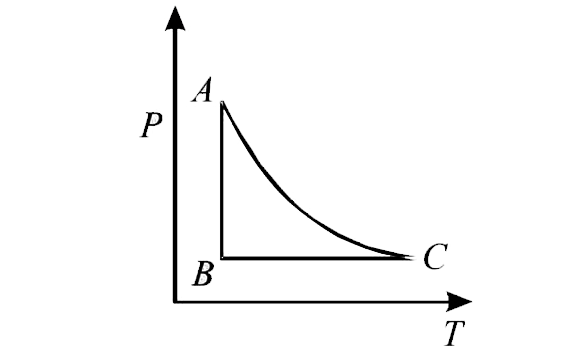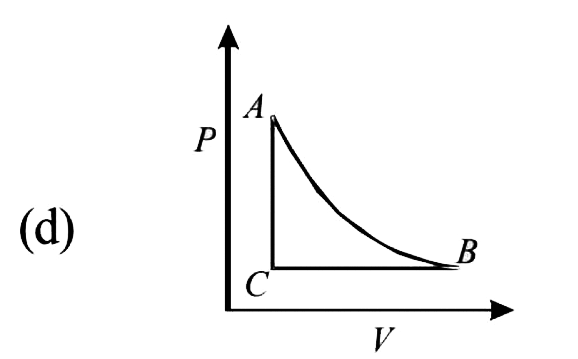The PT diagram for an ideal gas is shown in the figure, where AC is an adiabatic process, find the corresponding PV diagram.

A

B

C

D

Video Solution
Text Solution
The correct Answer is:B
(b) If we study the P-T graph we find AB to be a
isothermal process, AC is adiabatic process given. Also
for an expansion process, the slope of adiabatic curve
is more (or we can say that the area under the P-V
graph for isothermal process is more than adiabatic
process for same increase in volume). only graph (b) fits the above criteria.
|
Topper's Solved these Questions
Similar Questions
Knowledge Check
The process on an ideal gas, shown in figure,is <br><imga≤ocr_imageload∈g=lazysrc=https://d10lpgp6xz60nq.cloudfront.net/physics_imagesHCV_VOL2_C24_E01_027_Q01.pngwh=80%mx-autosty≤=background:white;>
A(a)isothermalB(b)isobaricC(c)isochoricD(d)none of these.P−V diagram of an ideal gas is as shown in figure. Work done by the gas in process ABCD is
 A4P0V0B2P0V0C3P0V0DP0V0
A4P0V0B2P0V0C3P0V0DP0V0P-V diagram of an ideal gas is as shown in figure. Work done by the gas in the process ABCD is
 A4P0V0B2P0V0C3P0V0DP0V0
A4P0V0B2P0V0C3P0V0DP0V0
P−V diagram of an ideal gas is as shown in figure. Work done by the gas in process ABCD is

View SolutionIn the figure represent cyclic process. The corresponding PV graph is

View SolutionConsider P−V diagram for an ideal gas shown in figure.

Out of following diagrams(figure). Which represents the T−P diagram?


View SolutionThe ideal gas equation for an adiabatic process is
View Solutiongraph of an ideal gas is as shown in figure.

Heat is supplied to the gas in process (s).
View Solution


